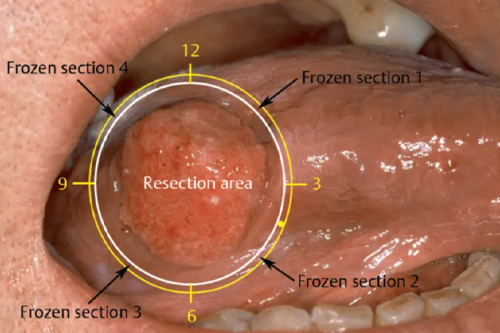
Tumor Resection Surgery
Not all types of brain tumors are amenable to aggressive surgical therapy with resection. Many of the diffuse infiltrating neoplasms without well-circumscribed margins, for example, the majority of the primary brain lymphomas, and most of the diffuse high-grade gliomas fall into this category; when the brain region that is involved becomes so large that resection of a reasonable portion of the cells will result in damage leading to significant neurological disability.
WHAT CASES IS IT USED FOR?
Other times, the lesion might be a bit more localized but is in an especially deep and vital area like the thalamus or brainstem, controlling involuntary fundamental movements like breathing, heart rate, blood pressure, digestive processes, etc. Here, it’s not unusual to decide on a minimally invasive biopsy to be able to present an alternative treatment such as chemotherapy or radiotherapy.
The most frequent brain tumor in adults is a metastasis that is, tumours developing once the cells of a malignant tumour of some other organ spread through the blood vessels into the brain. Surgery can sometimes be useful in these cases as well if there are not too many of them two or three as the case might be provided it is feasible, and if such treatment holds favorable prospects against alternative methods of therapy.
In respect of primary tumors, gliomas or astrocytomas are the most frequent. Grades III and IV are malignant lesions. Grades IV, or Glioblastoma Multiforme, are the most common and have the worst prognosis.
When the state of the patient and the location of the tumor permit, we will always try to perform at least a partial resection of the tumor to reduce the pressure on the brain, as this pressure is largely responsible for the symptoms the patient is suffering.
With this kind of tumor, the best scenario is always complete macroscopic resection, as, by definition, these tumors always have isolated malignant cells in microscopic foci that are centimeters away from the apparent limit of the tumor. When the tumors affect both brain hemispheres or when they clearly affect the structures connecting them, the complete resection is complicated since the disease affects both sides of the brain.
Types of Tumor Resection Surgery
- Brain Tumor Resection – Used for removing tumors from the brain while preserving neurological functions.
- Lung Tumor Resection – Includes procedures such as lobectomy or pneumonectomy to remove cancerous lung tissues.
- Breast Tumor Resection (Lumpectomy or Mastectomy) – Surgical removal of breast tumors to prevent cancer spread.
- Liver Tumor Resection (Hepatectomy) – Removal of tumors in the liver while maintaining liver function.
- Gastrointestinal Tumor Resection – Performed in the stomach, intestines, or colon to remove tumors affecting digestion.
- Soft Tissue Tumor Resection – Used for removing sarcomas and other soft tissue growths.
Indications for Tumor Resection Surgery
- A tumor is affecting vital organs or functions.
- There is a high risk of tumor spreading (metastasis).
- A biopsy confirms malignancy.
- The tumor is causing pain, pressure, or dysfunction.
- The tumor size is increasing significantly.
Tumor Resection Surgery Procedure
- Preoperative Assessment – Includes imaging tests like MRI, CT scans, and biopsies to determine the extent of the tumor.
- Anesthesia Administration – General or local anesthesia is used depending on the complexity of the surgery.
- Surgical Resection – The tumor is carefully removed using minimally invasive (laparoscopic) or open surgery techniques.
- Closure and Postoperative Care – The surgical site is closed, and the patient is monitored for complications.
- Pathological Examination – The removed tumor is sent for lab analysis to determine further treatment.
Benefits of Tumor Resection Surgery
- Removal of Harmful Growths – Eliminates cancerous and non-cancerous tumors.
- Improved Survival Rate – Essential in cancer treatment for preventing metastasis.
- Symptom Relief – Reduces pain, pressure, and other discomfort caused by tumor growth.
- Better Quality of Life – Enhances overall health and functionality.
Risks and Complications
- Bleeding and infection
- Damage to nearby organs or nerves
- Postoperative pain and swelling
- Recurrence of the tumor in some cases
- Need for additional treatments like chemotherapy or radiation therapy
Recovery and Post-Surgery Care
Recovery varies based on the type of surgery and individual health conditions:
- Hospital Stay – Patients may need a few days to weeks in the hospital.
- Medications – Pain relievers and antibiotics are prescribed to prevent infections.
- Follow-Up Appointments – Regular check-ups and imaging tests ensure proper healing.
- Lifestyle Adjustments – A balanced diet, physical therapy, and avoiding strenuous activities aid recovery.Contact Us
Conclusion
Tumor resection surgery is a crucial medical procedure that helps remove harmful growths, improving patient outcomes and survival rates. If you or a loved one require tumor resection, consult a specialist to determine the best approach for treatment.Schedule your Consultation with Dr. Ritesh Nawkhare
